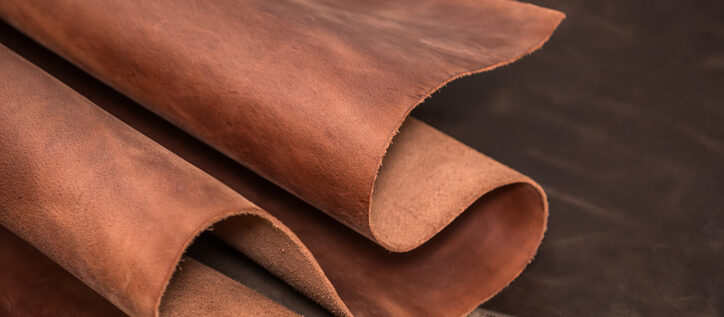You’ve undoubtedly seen the term “genuine leather” if you’ve ever been shopping for a new pair of shoes, a handbag, or a jacket. Doesn’t it sound elegant? After all, the word “genuine” conjures up images of something genuine and upscale. The catch is that “genuine” does not always equate to “the best” in the leather industry. Actually, it typically indicates that you are considering a mid-range choice. The next time you spend a lot of money on leather goods, let’s break it down so you know exactly what you’re getting.
What Does “Genuine Leather” Actually Mean?
Unquestionably, genuine leather is real leather. It is made from animal hide and is not synthetic like PVC or PU. The tricky part is that genuine leather is actually among the lower grades of leather. The phrase is frequently used by brands to make their products seem opulent, but it basically means, “Yes, this is real leather, but not the top quality.”
Consider it this way: authentic leather is to the leather industry what fast fashion is to the apparel industry. Although it’s genuine and effective, it won’t last as long or age as gracefully as the more expensive models.
A Brief Look at How It’s Made
You must have some knowledge of the structure of leather in order tocomprehend real leather. Layers make up animal hides. The strongest, most natural, and longest-lasting layer is full-grain leather. Top-grain leather, which has been slightly sanded and smoothed out to appear more polished, is directly beneath that.
The remaining material is known as split leather, and this is what authentic leather is made of. In order to give it the appearance of better leather, manufacturers frequently treat, dye, or emboss it; however, in reality, it lacks the durability and enduring qualities of premium leather.
How Does Real Leather Feel and Appear?
The truth is that real leather has that authentic leather feel and smell, and it looks good when it’s brand new. However, it doesn’t endure as long as top-grain or full-grain. After a few years of use, it is more likely to wear out, peel, or crack rather than acquire a beautiful patina.
That said, genuine leather still has its charm. It’s lighter on your wallet, which makes it perfect for everyday accessories like belts, wallets, and handbags. It feels real because it is real; it just doesn’t age like the luxury stuff.
Real Leather vs. Alternatives
This is where real leather differs from imitations. The holy grail is full-grain leather, which is incredibly durable, breathable, and actually getsbetter with age. In addition to being elegant and long-lasting, top-grain leather has a smoother finish that many people adore. Conversely, real leather is less durable but more reasonably priced and adaptable. Then there is bonded leather, which is essentially leftover leather that has been glued together; it has the appearance of leather but wears out quickly. Genuine leather is, therefore the middle child in the grand scheme of things. Although it’s superior to bonded or imitation leather, full-grain or top-grain leather will always be more beautiful and durable.
Where Do You Usually Find Real Leather?
Real leather is everywhere because it’s cheaper. Some of your accessories are probably already made of it. You can find it a lot in belts, wallets, handbags, shoes, watch straps, and even on couches and chairs. These things might look nice, but they won’t necessarily be things you pass down to your kids.
How Can You Tell If Leather Is Real?
It’s not as hard as you think to tell real leather from fake leather. The first thing you should look for is the label. Brands love to put “genuine leather” right on the tag. The texture is smooth, but it’s not as rich or detailed as full-grain leather. The smell is still that unmistakable leather smell, but it might smell a little more processed at times. And of course, the price can give it away. If it seems like a good deal for “real leather,” it’s probably real leather.
Should You Get It?
The million-dollar question is whether or not real leather is worth it. It depends on what you want. Genuine leather is a good choice if you want something stylish that looks real and doesn’t cost a lot of money. It’s great for trendy belts or handbags that you might want to change out after a few seasons.
If you want something that will last for decades, like a jacket or a bag you want to pass down, then full-grain or top-grain leather is a much better choice. Those higher grades cost more, but they last longer and look better as they get older.
How to Maintain Real Leather
Genuine leather still needs some care, even though it’s not the highest quality. In order to prevent it from drying out, condition it periodically and wipe it clean with a moist cloth when it becomes dusty. It may crack if you expose it to too much water or sunlight. Its lifespan can undoubtedly be extended with proper storage and a little attention.


